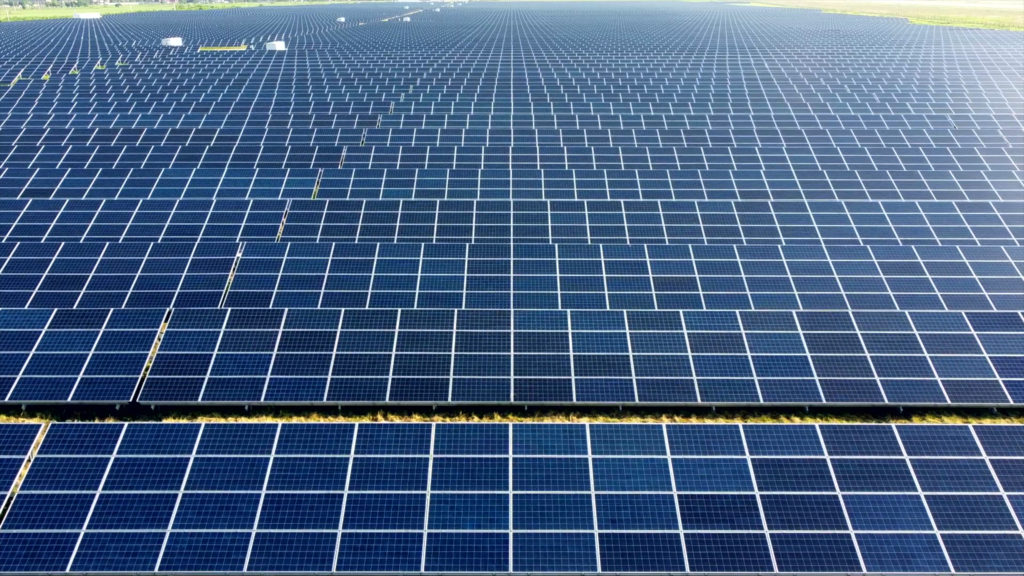
An American Prospect article points out the conflicts of interest for those driving this campaign.
Earlier this week we covered Commerce Secretary Gina Raimondo’s appearance in front of a Senate Appropriations subcommittee, where she fielded questions about Commerce’s anti-circumvention investigation into solar panel imports from southeast Asia. Lawmakers told her to hurry up with the investigating because the import slowdown it’s allegedly causing is hurting the installation business.
We’ve written a lot about how this is a statutory issue and that the study of these imports that are purportedly made in China shouldn’t cut corners, which is exactly what the Secretary Raimondo said at the hearing. But after one senator really leaned in to convey the urgency the installation industry is reporting she took a moment (at about the 1:03 mark in the video here) to talk about the pushback. “A lot of the rhetoric or rumor is very focused, if you hear it, on a 200 percent tariff,” she said. “And I really want to address that if I might.”
Raimondo went on:
“It is true Commerce would be permitted to impose a tariff at that excessive level. That is exceedingly unlikely, which is to say that level of a tariff is only reserved in outside cases when you can’t tell the difference between the company and, say, the Communist Party of China. The last 150 times we’ve done this since 2012, we’ve come out in the 10, 11, 12 percent range. Under 20 percent.
“I am in no way predetermining what this will be, if it will be anything, but I do think it’s important to say the 200% is an extreme case and not fitting with the precedent that we’ve had.”
Indeed, 200% would make a steep tariff. That’s what makes it an effective talking point, and why you’ve heard it or something like it reported in lots of major news outlets that have covered this story by inhaling the tailpipe fumes of the Solar Energy Industry Association (SEIA) – a large trade group that’s been doing its darnedest to drown this investigation in the bathtub. But, as Raimondo reiterated in the hearing, such a tariff would be the outcome of an extreme example.
The level of orchestration behind this freakout over the investigation smells fishy, which is what lead the American Prospect to get into its nuts and bolts in a lengthy story released Thursday. It confirmed the secretary’s explanation of the potential damages facing these importers, writing:
“These duties are applied at the company level. For 90 percent of all imports from China, the rate is, in total, between 12 and 20 percent, and that’s only assessed on the components, not the entire solar panel. …
But SEIA has gone with the 250 percent number. (SEIA Senior Vice President for Public Affairs Dan Whitten) also cited to the Prospect ‘the retroactive nature of the tariffs’ … as a killer for the industry. It wants Commerce to preempt its own investigation and issue a preliminary ruling showing no harm.
But the key point is that any company that knows its supplier knows exactly what it would have to pay in the worst-case scenario. It’s written down on a sheet of paper.
Emphasis added. So why is SEIA mounting such an aggressive campaign against this investigation? Well, solar is an obviously important source of green energy and therefore plays a huge role in our national climate goals, but it’s also an industry, and a business. And as a trade association representing lots of importers it’s performing its primary function: Protecting their bag.
It could also be because some of its member companies are the same ones that were originally targeted by the tariffs that these imports are accused circumventing, as the Prospect points out, and that some indeed source from suppliers that use slave labor in China’s Xinjiang province — where the government has forced an estimated 1 million Uyghur and other typically Muslim ethnic groups into detention camps, according to researchers and news organizations. And this big push could also be because it could be gearing up to take a run at overturning a ban on imports made by that labor that’s set to take effect about six weeks.
From the article:
While the Commerce investigation is about circumvention of anti-dumping laws, it’s impossible to dissociate it from a looming statutory prohibition on imports using forced labor in the solar-producing region of Xinjiang, which comes into force at the end of June. Many see the current fight as a dry run for the attempt to overturn enforcement of a congressional statute. Several Chinese-owned firms in SEIA’s membership have also publicly admitted to using slave labor. Yet SEIA allowed all these companies to sign a pledge it organized committing to ban forced labor from the solar supply chain.
Man, that’s pretty grim! But let’s imagine for a second a scenario like that playing out. If the installers get their way and the Commerce department smothers this investigation and then there’s little enforcement to keep slave-made Chinese solar panels out of the U.S. market, what can the average American solar consumer do to buy solar panels from an industry dominated by Chinese producers and still hold onto a shred of their morality? The Prospect article answered that question too:
For their part, the Chinese companies have implausibly intimated that they have a floor in their factories where non-slaves make components for the U.S. market, according to sources.
Okay, glad they cleared that up. So just make sure when you order to ask for the panels made by the non-slaves, got it.

